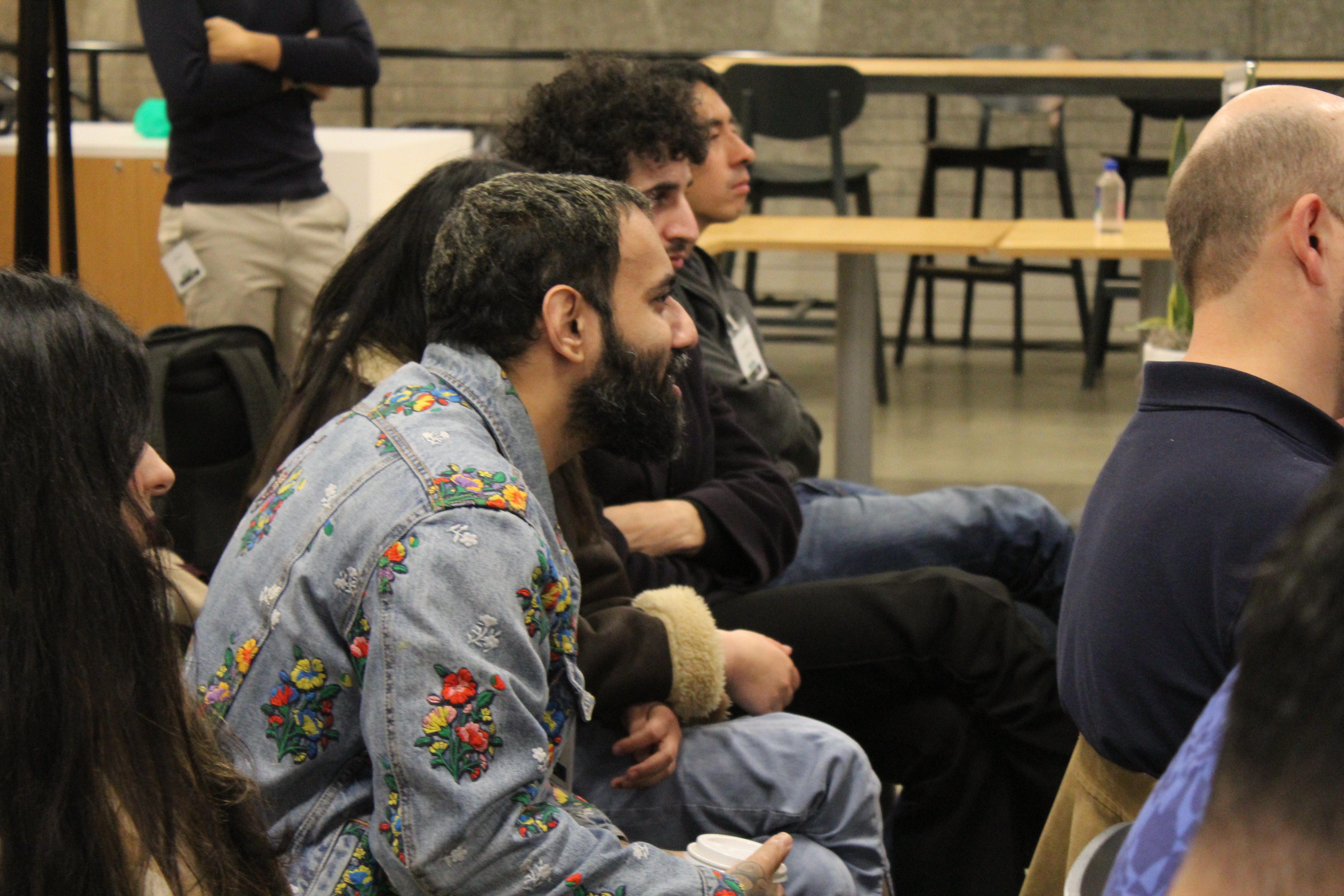Growth is no longer about quick wins or “hacks.” Today, it’s about stacking smart channels, experimenting with intent, and building community and culture into the product itself.
That was the core message of a candid panel conversation featuring early-stage founders and industry veterans—Roby John from SuperGaming, Eve Halimi from Alinea Invest, and Ken Sasaki from VIZ Media—moderated by Eros Resmini from the Mini Fund, who previously helped build Discord from the ground up.

From the left: Eros, Roby, Eve, and Ken at the panel discussion
Across a fast-paced, insight-packed session, the panel explored what growth means today, where to find untapped opportunities, how to hire the right talent, and how to avoid the most common mistakes startups make on the road to scale.
“Growth Hacking” is dead. It’s just growth now.
The session kicked off with Eros polling the audience on the term “growth hacking.” Unsurprisingly, no one raised their hand. The panel quickly agreed—growth hacking is an outdated term. Today, it’s just growth.

Audience at the panel discussion
But that doesn’t mean growth has become easier. If anything, the game has become more sophisticated—and more human. It’s about the right message, at the right time, through the right channel, told by the right people.
Finding white space: building where others aren’t looking
All three panelists had strong takes on identifying and exploiting white space—those early, unsaturated opportunities that offer outsized potential before they become crowded.
Eve (Alinea Invest): tapping into TikTok and Gen Z
Alinea Invest, a social investing app, has built its user base by going all-in on TikTok, reaching Gen Z (70% of their users) and young women (90% of their user base) where they already are.
“TikTok was our whitespace,” Eve shared. “We tried college ambassador programs, YouTube, and Instagram, but nothing scaled like TikTok. Short-form storytelling and founder-led content brought us our first group of users—and millions of views.”
Roby (SuperGaming): building a culture-based brand
Roby talked about building Indus, a futuristic shooter game rooted in Indian mythology and cultural heritage.
“No one thought a new battle royale in India could be scaled. But we found whitespace in local cultural representation that resonated with our audience. Our chosen name “Indus” was our wedge—everyone in India has studied the Indus Valley Civilization. That familiarity helped us connect.”
The game pre-registration scaled globally with users from across the world drawn to its “Wakanda of India” positioning. Now, SuperGaming is extending the same approach to other underserved regions: “Latino futurism, Arabic futurism, Southeast Asian futurism. Every culture wants to see themselves in the game.”
Ken (VIZ Media): solving real-life inconveniences with tech
Ken highlighted a fast-growing footwear company making slip-on sneakers with patented heel technology, initially built for people with disabilities. “They solved a minor but universal inconvenience. And their growth wasn’t just product-driven—it was smart IP strategy, licensing tech early, and partnering with Nike.”
Eros rounded out the section by reflecting on how Discord’s early whitespace was Twitch, specifically, underserved streamers looking for better community tools.
Lessons from the trenches: mistakes and missed opportunities
What would these founders do differently if they could start again?
Roby: “We were too focused on going head-to-head with big competitors too early. I’d go more sideways today—Find your niche, build something familiar, but fresh and differentiated for your audience. Be brave enough to differentiate clearly and early.”

Eve: “We waited too long to charge for our product, and undercharged when we finally did. We spent a year too focused on campus ambassadors, but we should have tested out more diverse channels. I’d start charging earlier and test more channels faster. ”
Ken: “I didn’t hire the right people for new growth lines. We were too conservative. We eventually brought on a true consumer product specialist, and it transformed our merchandising business.”
Eros summed it up: “Startups need a portfolio mindset for growth. Channels degrade. White space vanishes. Always be testing—and define what success looks like at the test stage.”
Hiring for growth: what to look for, what to avoid
One of the biggest make-or-breaks for a startup: your first few growth hires. The panelists shared their hard-won lessons in hiring the right people.
Hire for hunger and taste
Roby emphasized hiring people with “hunger and taste”—not just resumes. “We looked at folks who had built aspirational brands in adjacent markets, like OnePlus for Mobile Phones, and brought them in for what they could do next.”
Test before you commit
Eve recommended trial periods: “We hired our Head of Growth after a contractor test run. It lets us evaluate output and culture fit. Marketing hires are the hardest—this helped us avoid expensive mistakes.”
Avoid the “track record trap”
Eros cautioned against hiring people just because they have a “proven track record for user acquisition” at a big tech company. “The vast majority of their energy might be for learning how to sell that user acquisition plan to the internal folks at Microsoft that need to approve the plan, and the different buy-in requirements from five different departments. While those are very important skills, they don't make any sense at all in a 10-person startup.”
He shared Discord’s method: using a matrix to evaluate intelligence, attitude, skills, and knowledge, and always doing a casual lunch interview to test for cultural fit. “Would you want to eat lunch with this person again? If not, don’t hire them.”
Performance vs. brand marketing: the balancing act
Eve: “We’re very data-driven. Every dollar is tracked against LTV. Brand awareness happens organically through viral reach.”
Eros: “Brand matters more than you think—especially as performance channels degrade. You can actually measure brand impact using weighted impressions. A well-designed t-shirt worn by fans is worth more than a banner ad. Build a system to track this.”
He encouraged founders to build a framework that evaluates all marketing efforts—paid and organic—against a normalized funnel. “You don’t have to choose one or the other. Stack both. Test both.”
Know when (and who) to hire
A common question from the audience: How do you know when it’s time to hire?
Eros advised: “Hire when someone on the team does two full jobs. Don’t hire to fill a role that’s only 20% of someone’s time. And don’t hire just because you raised money—pretend that money isn’t there.”
Roby added, “We kept our team under 30 people for years. Every hire had to justify itself. We’d fly them in, have them shadow the team, and sometimes even stay with us. If they clicked, we made the offer.”

Audience at the panel discussion
Conclusion: growth is strategy, not serendipity
The panel reinforced one key message: growth isn’t about chasing trends. It’s about thoughtful experimentation, cultural relevance, and ruthless prioritization.
- Know your whitespace.
- Stack your channels.
- Hire for chemistry and capability.
- And never stop testing.
There's no one-size-fits-all approach to startup growth. Your journey is unique. Growth is not a destination – it's a continuous journey of discovery, innovation, and strategic thinking.
There is no guarantee that the portfolio companies mentioned in this blog will be profitable or will remain in the fund.
If you're an investor or LP looking for partnership opportunities, reach out to us at hello@gfrfund.com. For startups, please pitch to us by filling out this form. We'd love to hear from you!





%20(1)-1.jpeg)